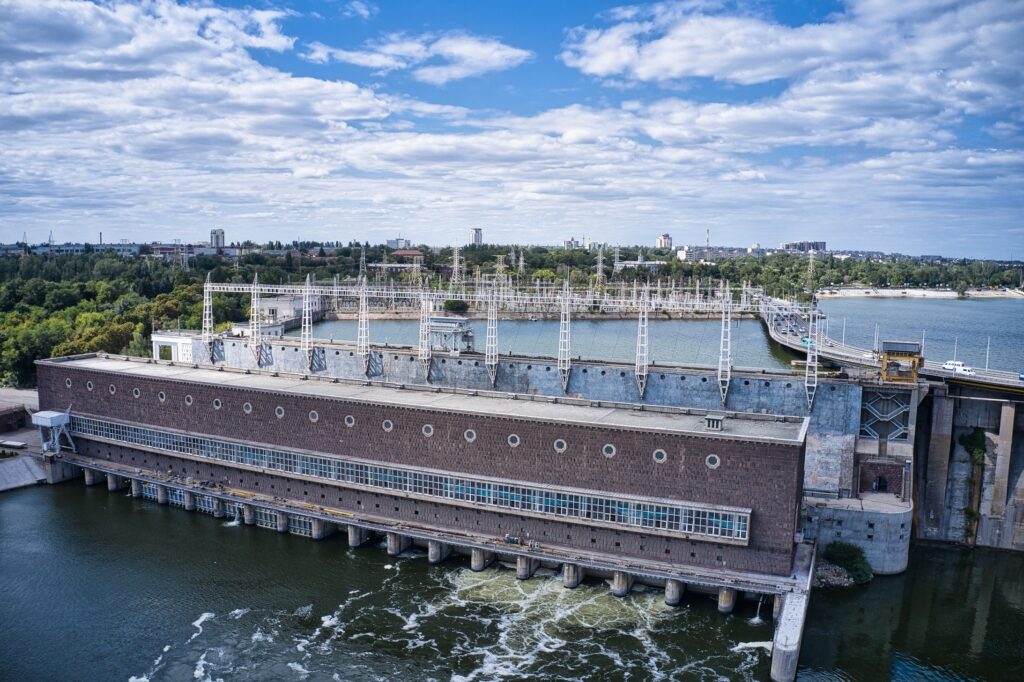Hydropower is one of the most sustainable methods of producing energy and hydroelectricity. This method relies on the kinetic force generated by natural running water sources such as streams and rivers by pushing it through man-made dams.
Water from a reservoir is captured in an intake and pushed forward through a series of steel penstocks (large tubes) that direct the water into the turbine and generator. As the water is thrust upon the turbines at full force, it propels the blades and makes them spin at top speed, which in turn activates the generators. Magnets inside the steel generators start to spin past copper wire coils, which animate the otherwise dormant electrons and this produces electrical energy.

Thousands of gallons of rough water running at high velocities must make direct contact with various metal components to produce enough hydroelectricity for community consumption. Polyurea coatings for the hydroelectric power generation industry can help prevent damages such as corrosion, wear and tear, water erosion, and other common issues that may arise.
What Are the Advantages of Using Polyurea Protective Coatings for the Hydroelectric Power Generation Industry?
Facilities that produce hydroelectricity feature a number of metal and other types of components that consistently come in direct contact with forceful running water. Over time, this type of contact can result in material breakdown, corrosion, erosive flow, and water cavitation. Preventing these issues highlights the importance of using polyurea coatings in the hydroelectric power generation industry for the following reasons.
- Ultimate corrosion protection. Corrosion is a common issue in many hydroelectric generation facilities. Polyurea waterproofing provides advanced and virtually impenetrable corrosion protection on the interior of metal water intakes, penstocks, turbines, heat-affected zones (HAZ), welded areas, isolation valves, and any other components the water touches or runs through.
- Excellent wear resistance. Polyurea protective waterproofing coatings are incredibly wear resistant in the sense that they can prevent material breakdown that’s caused by forceful water flow impact. It’s flexible enough to withstand and facilitate smooth water movement, yet also durable enough to prevent the degradation of the materials that it’s protecting.
- Electrical resistivity and conductivity. Polyurea protective coatings have the hybrid function of electrical resistivity and conductivity. That means they can strongly resist residual impacts of electrical currents and have the ability to also facilitate electrical conduction for various applications in hydroelectric power stations.
- Heat and oxidation resistance. Metal corrosion is caused by a combination of heat and oxidation. Polyurea protective coatings, which consist of a durable polymer, can be applied to prevent corrosion development and its extremely damaging effects on metals and other materials.
- Particle and water erosion prevention. Large volumes of water running through metal structures at high velocities have the capacity to cause serious damages if left unprotected. Polyurea protective coatings protect against material fatigue, wear, oxidation, and other types of elements that can breakdown the structural materials due to heavy water impact.
- Shorten regular annual shutdowns. Hydroelectric power generation systems and stations need to undergo routine maintenance checks to ensure that all of the internal and external mechanisms are functioning safely and normally. During these inspections, technicians look for specific mechanical issues that could hinder the productivity of the facility or pose a potential threat to the efficiency of the operations. Polyurea coatings for the power generation industry help accelerate these regular maintenance checks and significantly reduce facility shutdown times so that operations can be resumed as soon as possible.
- Durability. Polyurea is one of the most chemical-resistant coatings currently available on the market. That’s why it’s the top protective coating choice for a variety of commercial and industrial applications. When applied to properly prepared surfaces, spray-on polyurea protective waterproofing coatings can last for decades in all types of harsh environmental and weather conditions.
- Excellent adhesion. Polyurea protective waterproofing coatings have the ability to bond to virtually any type of commercial or industrial material. It dries within seconds allowing for unlimited application thickness in one pass, you can walk on it in minutes, and it fully cures within 24 hours. It is almost immediately usable, which helps to significantly reduce facility downtime during the application process. Spray-on applicators make the application process incredibly easy and expedient, resulting in a smooth, seamless, durable, yet flexible membrane.
What Are the Most Common Applications for Polyurea Protective Coatings in the Hydroelectric Power Generation Industry?
Spray-on polyurea protective coatings form a solid, yet flexible and smooth membrane on virtually any surface to which they’re applied. This includes metal, concrete, wood, and other interior and exterior substrates. Its high chemical, temperature, abrasion, and impact resistance combined with incredible impenetrability make it the ideal waterproof coating application in the hydroelectric power generation industry.
In this particular field of power generation and distribution, polyurea is commonly used to protect the following structures against water erosion, corrosion, oxidation, and other types of damages:
- Dam positive face waterproofing
- Dam Spillway liners
- Reservoir silt release pipe linings
- Pump Shafts/Journals
- Conveyor Belts
- Turbine Rotors
- Penstocks
- Runner Blades and Compressor Wheels
- Combustion Baskets
Cavitation is the formation of minuscule vapour cavities or bubbles. It occurs when the pressure of a liquid—in this case, water—rapidly declines below the vapour pressure. The resulting noises and vibrations caused by cavitation can break down the various components of the pumps inside the power station in addition to various mechanical failures.
Advanced polyurea protective coatings are capable of minimizing the impact of heavy vibrations to prevent these types of damages that are the result of seismic pressures from large volumes of water running at high velocities.
Hydroelectric Power Industry Solutions from IMC Distributors
As one of the leading providers of high-performance advanced polyurea protective coatings in North America, IMC Distributors has a long line of ISOMAT and Nukote products that are ideal for coating applications in the hydroelectric power generation industry. Contact us today to learn more about our products or to get more recommendations for your specific needs.
 Karli Logan is the Owner and President of IMC Distributors which is the exclusive partner of Nukote Coating Systems in Canada. With a B.Sc and M.Sc, as well as a demonstrated history of working across a number of industries, she has a passion to drive significant gains and benefits for IMC’s clients.
Karli Logan is the Owner and President of IMC Distributors which is the exclusive partner of Nukote Coating Systems in Canada. With a B.Sc and M.Sc, as well as a demonstrated history of working across a number of industries, she has a passion to drive significant gains and benefits for IMC’s clients.